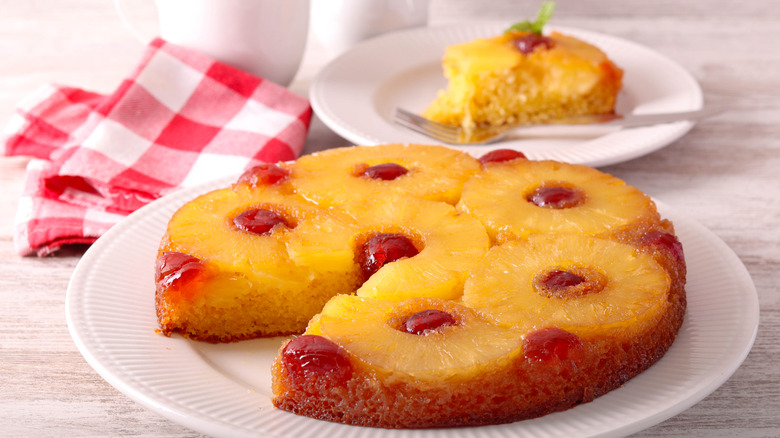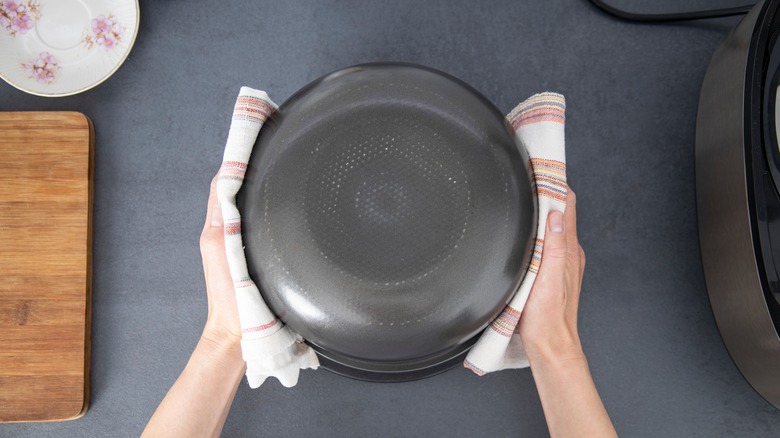How To Successfully Flip A Pineapple Upside Down Cake Without It Falling Apart
If you're craving an old-timey treat, pineapple upside-down cake is one of several old-school desserts that will take you straight back in time. Featuring a rich cake topped with glistening pineapple rings — often with cherries at their centers — the dish looks upscale but can actually be made from three pantry ingredients and a boxed cake mix. Even with a simplified approach, though, many are too intimidated to try making it, as the final step — inverting the cake onto a serving dish — can go terribly wrong.
For some expert insight on successful flipping, Food Republic spoke with Edmund McCormick, founder and CEO of Cape Crystal Brands. He shared some pro tips for properly executing that frightening final flip and avoiding a broken cake. "The real reason pineapple upside down cakes fail [is due to] inadequate pan preparation or flipping too soon," he explained.
Before assembling one's cake, you can take measures to ensure a successful flip. McCormick recommended buttering the baking dish generously before lining it with parchment. The sides of the pan can be more lightly greased — using the wrapper from your butter is a mess-free way to do it — but you need to go heavier with the butter in the bottom. As a final measure, "Sprinkle some brown sugar underneath the fruit to aid in loosening," he instructed. A key element is the caramelized topping, which is achieved as the butter and brown sugar combine with the juicy pineapple rings in the heat of the oven. This caramelization also helps prevent your cake from sticking to the pan.
Successfully flipping your pineapple upside-down cake
Once the dessert is baked, impatience is a surefire way to endanger it. Make certain your pineapple upside-down cake is completely done by inserting a toothpick in the center; if it comes out clean, the cake is ready. Next, give it time to adequately cool before attempting to flip it onto a serving dish. "Let the cake cool on a rack for 5 to 7 minutes," Edmund McCormick advised.
Before flipping, "run a knife around the edge [of the cake]," McCormick instructed. This ensures the edges are fully released from the pan. Place the serving dish securely over the open side of the pan, against the cake layer, and "invert it with one swift move," he detailed. The pan and serving dish should be inverted onto a solid, flat surface, like a kitchen counter. Once they're flipped, lift the pan away to reveal your glossy, fruit-and-caramel-topped treat — you may need to lightly jiggle the pan as you lift it to fully free the cake.
While you want to let it cool, be sure not to wait too long before flipping it. If the caramelizing juices are left to cool too long, they will solidify and not drip down the sides. The cake is also likely to stick and not exit the pan properly if it cools too much. If you do accidentally leave it cooling too long and fear it won't loosen from the pan, you can always place it back into the oven for a short time to reheat the caramelized bottom.


